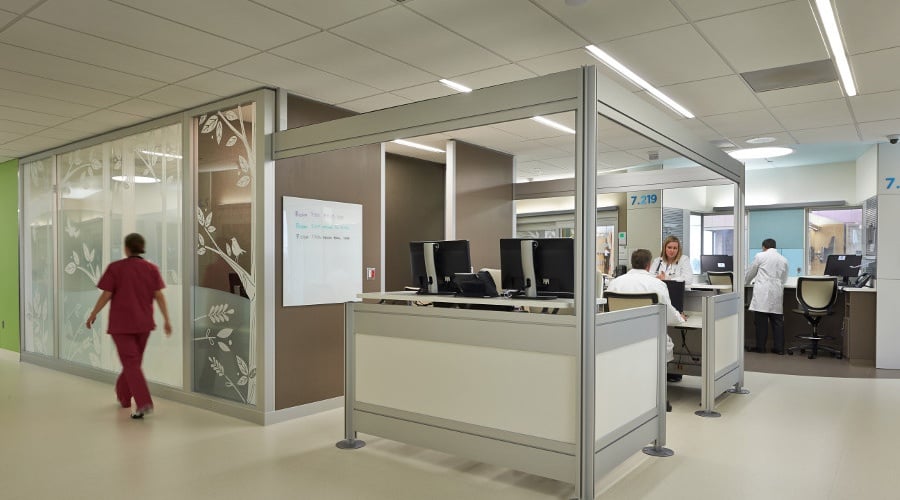Turning the Negative Impact of Technology on Healthcare into a Positive

It’s no secret that technology has done amazing things for our health and well being. Technological advances have brought us new treatments, medicines, and helped us live healthier, longer lives. On the flip side, technology may also hinder interactions between doctors and patients, as well as caregivers and colleagues.
The same technology that helps providers deliver better and faster treatment may also be decreasing face time with their patients. Think back to your last visit to a healthcare clinic. How many times did your healthcare providers use some sort of computer device? It adds up to a lot of screen time which ultimately results in less time focused directly on patients.
KI recently partnered with BBH Design and Parkland Health & Hospital System to research healthcare design in the outpatient clinic. Through our observations of physicians, nurses and patients we found that anyone using a computer is 67% less likely to interact with a patient. That means patients spend a large amount of their time in clinics sitting and waiting, disengaged from their care experience.
We also discovered that the reliance on technology has negative impacts on interactions between doctors and nurses as well. Even when work areas are shared, nurses and doctors are less likely to interface when using computers.
Strategies for Technology Integration
How can we solve this dilemma? It’s as simple as arranging tech devices and planning workspaces with face-to-face interaction in mind. Here are several strategies for increasing engagement while maintaining the use of technology:
- Create an interactive experience between provider and patient. Integrate tables that encourage dialogue. Doctors can share a monitor or device while maintaining eye contact, eliminating the need to turn their backs on patients.
- Incorporate wall-mounted monitors. Mounting monitors to walls makes information visible to both providers and patients and could help initiate meaningful discussion.
- Reconfigure computer workstations to encourage interaction. Set up workstations so staff face one another. Lining workstations along walls decreases communication.
For more ideas on clinic design, download KI’s white paper, “The Communication Factor: Observations & Opportunities for Improving Clinic Design”.
Subscribe
Stay up to date with the latest trends and more.


